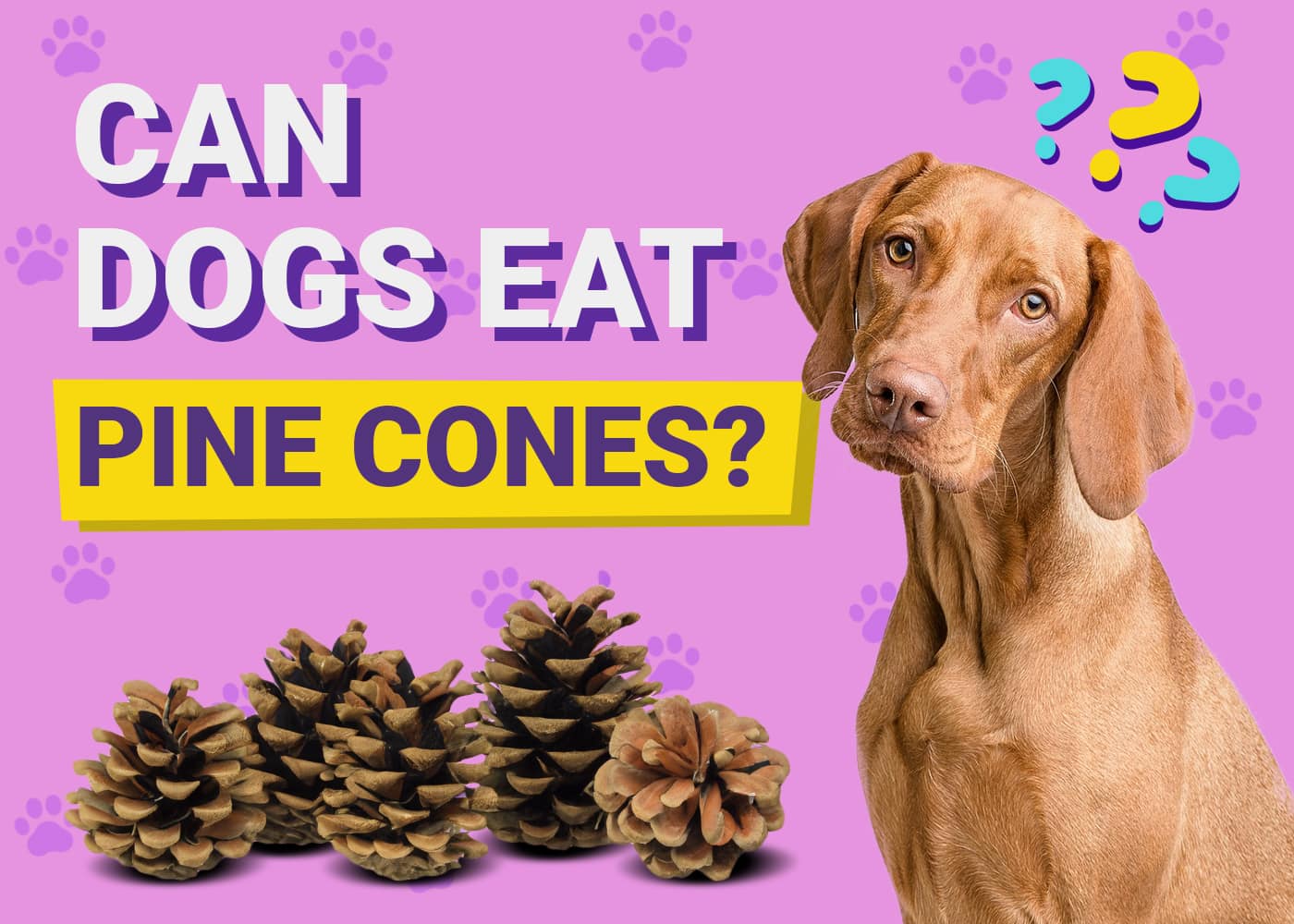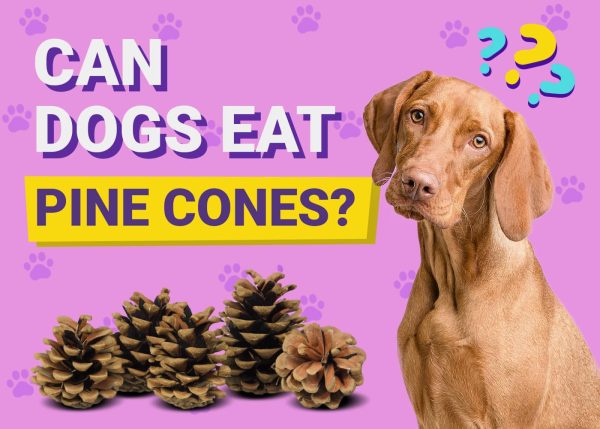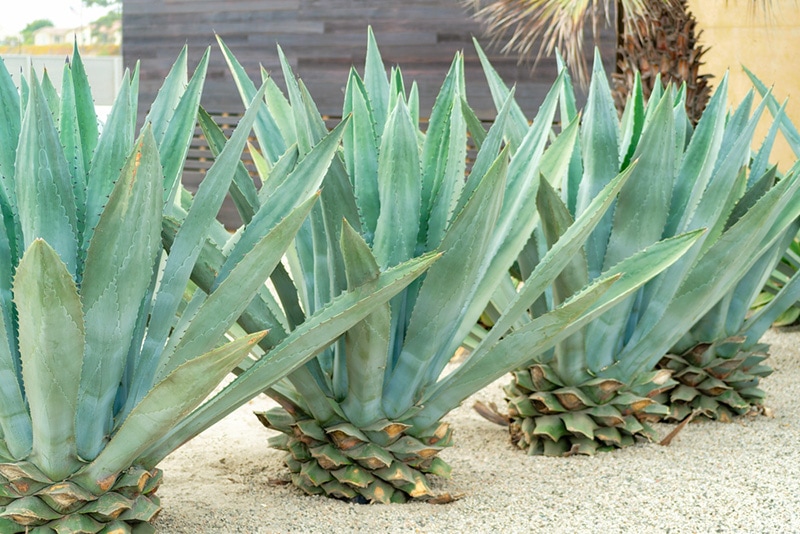Dogs are omnivorous animals, which gives us a bit of leeway in terms of extra treats we can feed them in addition to their regular dog formula. However, dogs sometimes take a fancy to weird things like non-edible bits and pieces they find in parks and forests, like pine cones. Be careful—pine cones—as well as many other natural items you may come across when out and about—can make dogs sick.
Read on to find out more about the usual items dogs may try to nibble on while enjoying the great outdoors and whether or not they’re safe.
Are Pine Cones Toxic to Dogs?
No, pine cones are not toxic to dogs, but ingesting one could still cause your dog to become very sick. Eating pine cones— which are large and rough-textured—can lead to stomach upsets, constipation, and, in severe cases, an intestinal blockage1. An intestinal blockage is very dangerous and requires surgery to put right, so dogs should not be allowed to eat or chew pine cones.
Can Dogs Eat Leaves and Grass?
As odd as it may seem for a dog to enjoy eating leaves, this behavior is likely rooted in the habits of their wild ancestors. Wild dogs, as omnivorous animals, have a tendency to eat leaves, plants, and grass to supplement their diets.
Leaves don’t really have any nutritional value for dogs, but some domestic dogs still enjoy munching on them now and then. Some dogs seem to eat grass to induce vomiting and relieve an upset stomach.
In short, it’s okay for dogs to eat a few leaves as long as they don’t eat too many of them and as long as there are no toxic fruits or berries attached to them. Tomato plants are a good example of this, as these are bad for dogs. Furthermore, too many leaves or too much grass can result in intestinal blockage.
To tempt your foliage-loving pooch away from munching on leaves or grass too often, try offering crunchy safe vegetables sometimes, in small amounts, like celery, green beans, or carrots. This will allow your dog to indulge in the urge to crunch on something risk-free.
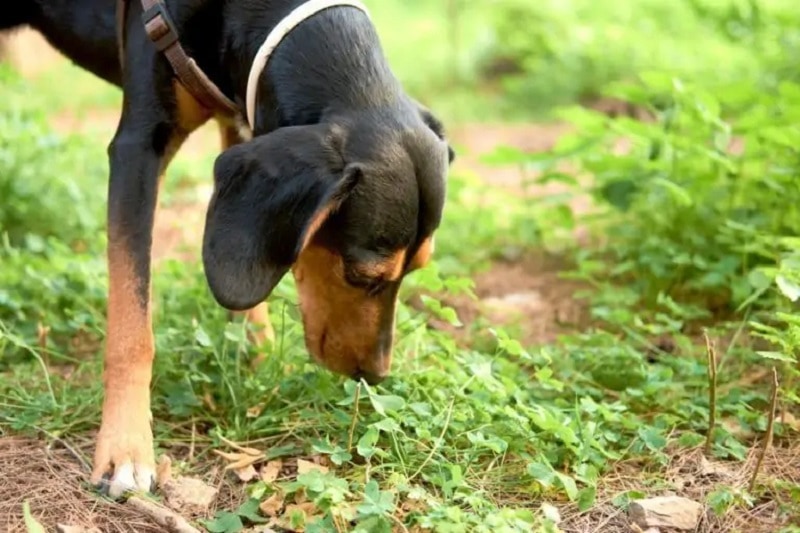
What About Acorns?
Acorns contain a compound that is toxic to dogs. This is called tannic acid, and it can be responsible for gastrointestinal upset and irritation with symptoms like diarrhea and vomiting, and even, in serious cases, kidney and liver failure. Mercifully, this is a rare outcome, but it’s still important to be aware of it if you spend time out in nature with your dog.
Are Horse Chestnuts Safe for Dogs?
Unfortunately, no. Horse chestnuts (conkers) contain aesculin, a compound that is poisonous to dogs2. Signs that a dog has been poisoned by horse chestnuts include vomiting, stomach pain, appetite loss, and restlessness. No part of a horse chestnut tree is safe for dogs, including the leaves, seeds, bark, and flowers. They are also an intestinal obstruction risk.
Fortunately, not all chestnuts are toxic—the American Chestnut and sweet chestnut are both fine as treats in small amounts as long as they’re cooked, chopped and unseasoned.
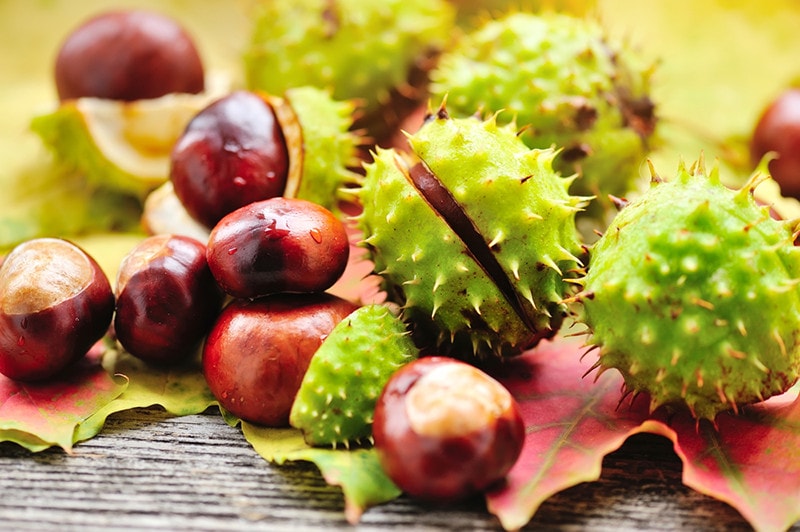
What Should I Do if My Dog Has Eaten Something They Shouldn’t?
Your vet should be your first point of contact if you suspect your dog has ingested something toxic or otherwise potentially dangerous. Depending on what your dog has eaten, your vet may advise monitoring your dog over a period of time or ask you to bring them in for a checkup if they think it’s necessary.

Final Thoughts
So, while pine cones aren’t poisonous to dogs, they still have the potential to cause a very upset tummy or even an obstruction. If you haven’t already, it’s a great idea to teach your dog the commands “leave it” and “drop it” in case you’re ever in a situation where your dog gets their chops on something potentially dangerous. “Leave it” is useful if you see they are about to pick something up, and “drop it” for when it is already in their mouths.
You can practice this by handing your dog a toy (not their absolute favorite as this will make it harder to get them to drop it) and offering a treat or a toy they absolutely love as an exchange. As they get used to the exchange, start incorporating a command like “drop it”. When they drop the toy, reward them immediately with their favorite toy or treat.
Featured Image Credit: Henryk Niestrój, Pixabay

